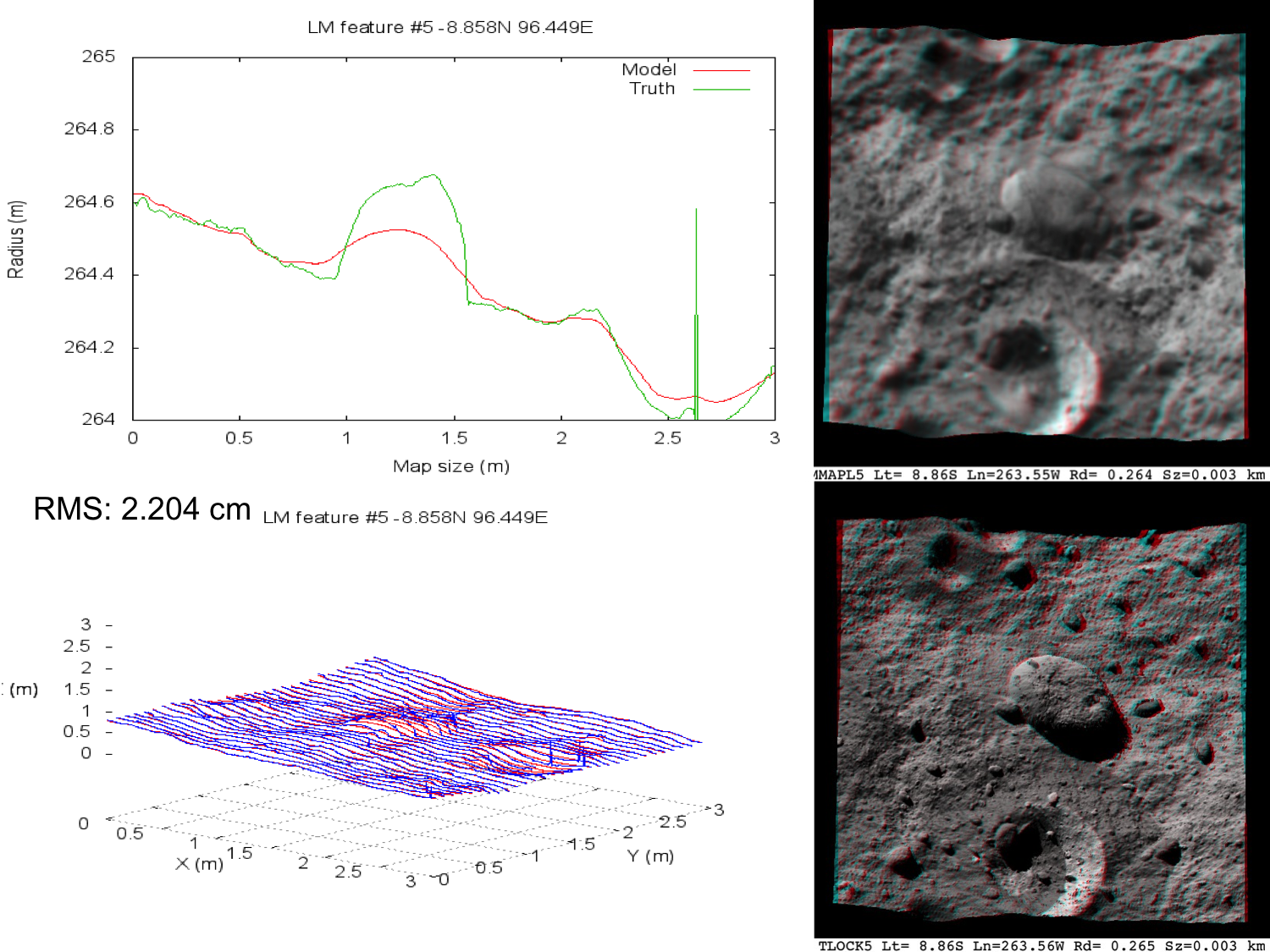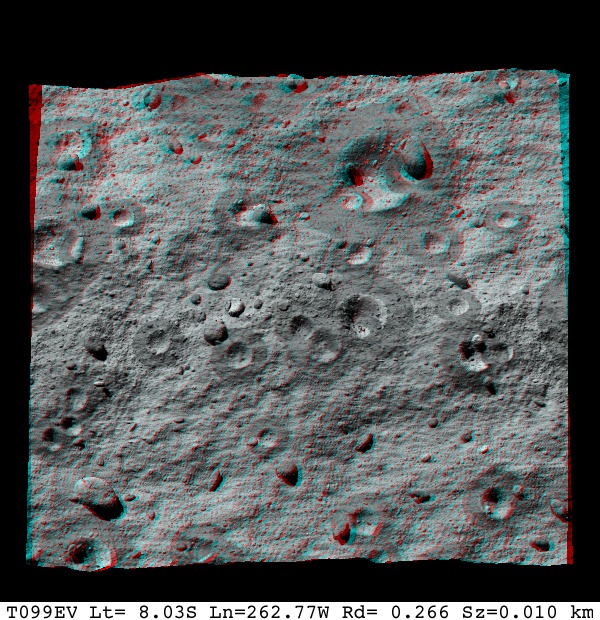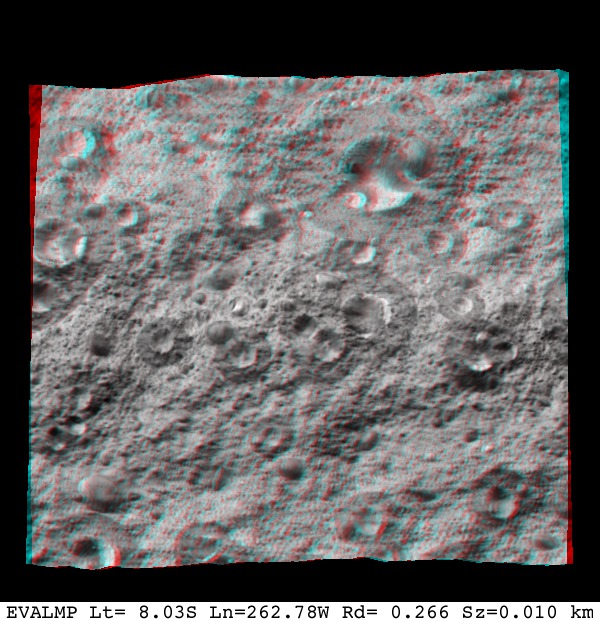|
Size: 1466
Comment:
|
Size: 1531
Comment:
|
| Deletions are marked like this. | Additions are marked like this. |
| Line 26: | Line 26: |
| {{attachment:LM1.png}} | {{attachment:LM1.png||width="600"}} |
| Line 30: | Line 30: |
| {{attachment:LM2.png}} | {{attachment:LM2.png||width="600"}} |
| Line 34: | Line 34: |
| {{attachment:LM3.png}} | {{attachment:LM3.png||width="600"}} |
| Line 38: | Line 38: |
| {{attachment:LM4.png}} | {{attachment:LM4.png||width="600"}} |
| Line 42: | Line 42: |
| {{attachment:LM5.png}} | {{attachment:LM5.png||width="600"}} |
OBoptimal Results (Tanner)
General Stats
Tiling step |
RMS (cm) |
5 cm |
2.158 |
2.5 cm |
1.988 |
1.25 cm |
1.782 |
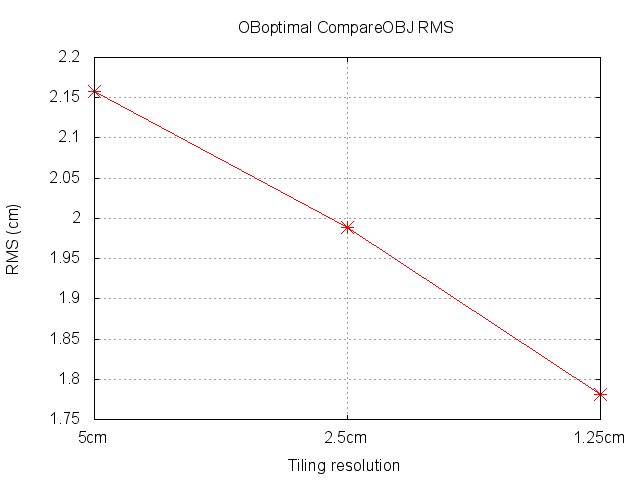
During this test we were still largely unhappy with the results we were getting from iterating so my test differed from Kris' in the sense that he iterated between each tiling and I did not. It is clear from our results, however, that the few iterations he did, did not have an overly adverse effect on the RMS of the evaluation site. Our final results differed by only 0.17%.
View Map RGB
Truth |
Model (1.25 cm GSD) |
|
|
Lockheed Martin Features
One of the driving factors of this test was to show that the current imaging plan for Orbit B as dictated by the mission was insufficient to produce the quality of topography needed for navigation. To help demonstrated this, we asked Lockheed Martin to directly compare five "features" of their choosing from both topography generated from the current DRM imaging campaign, and this OBoptimal data set. The following is an overview of the data sent to them for analysis from this data set.
Feature 1
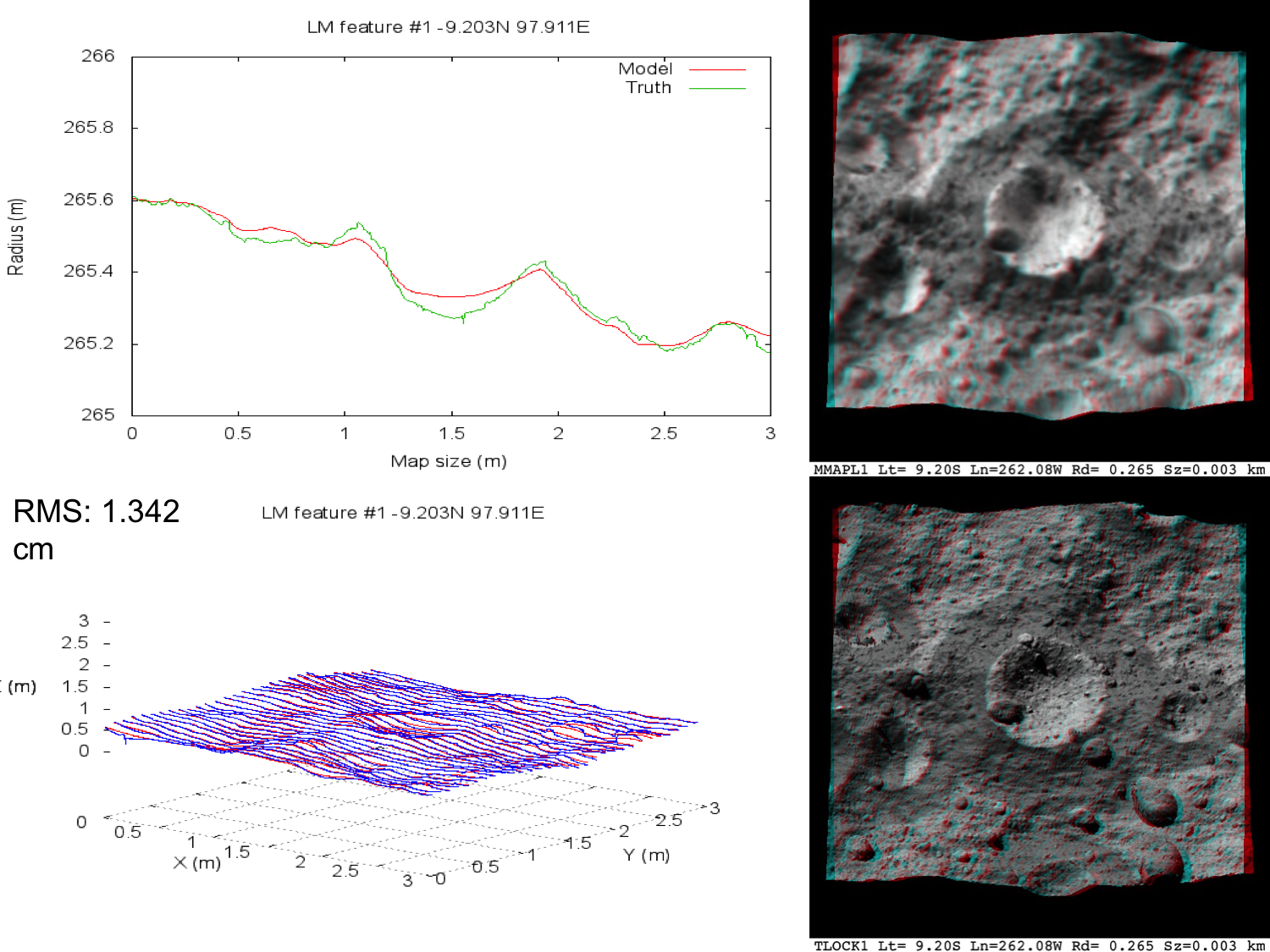
Feature 2
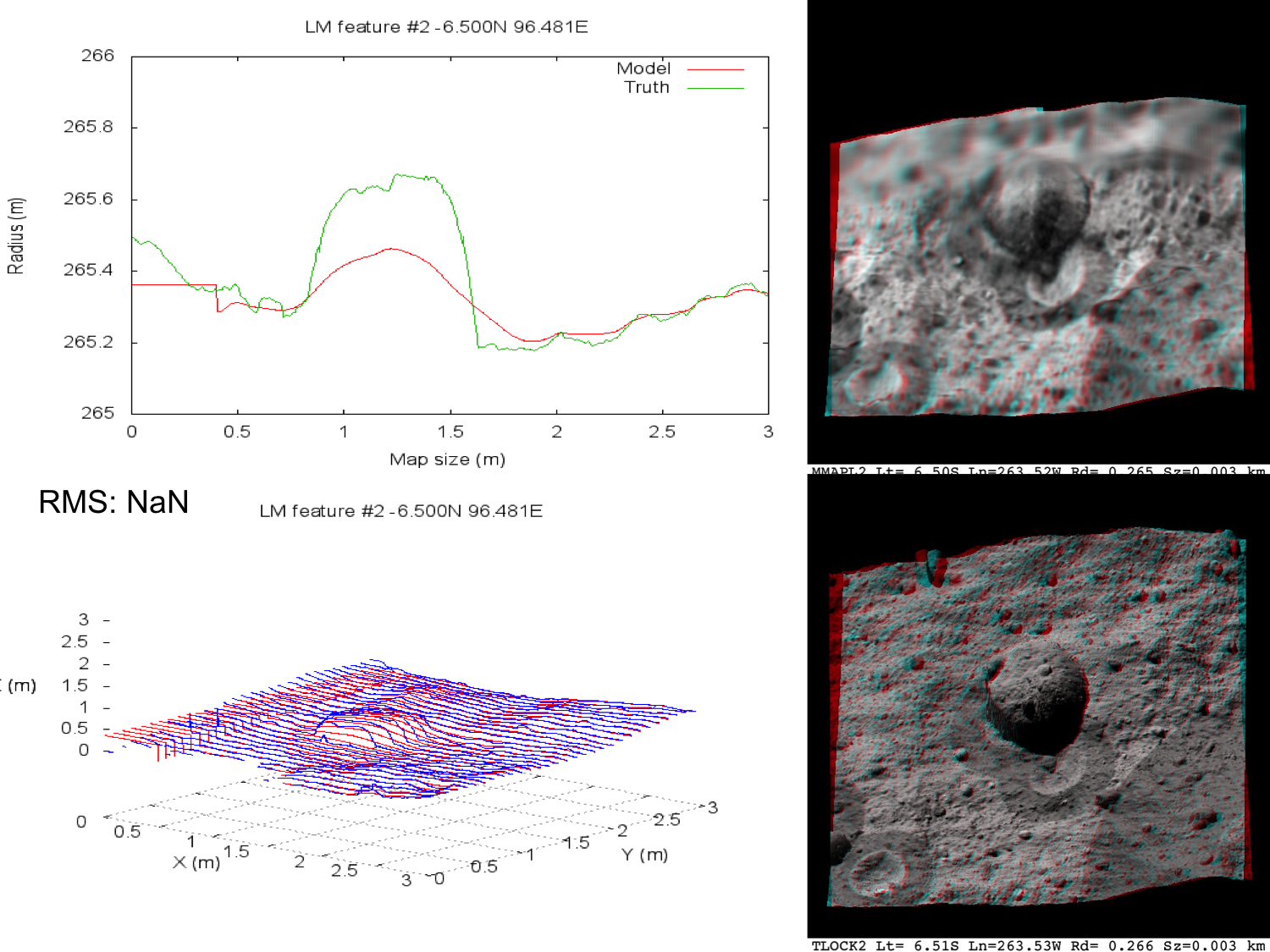
Feature 3
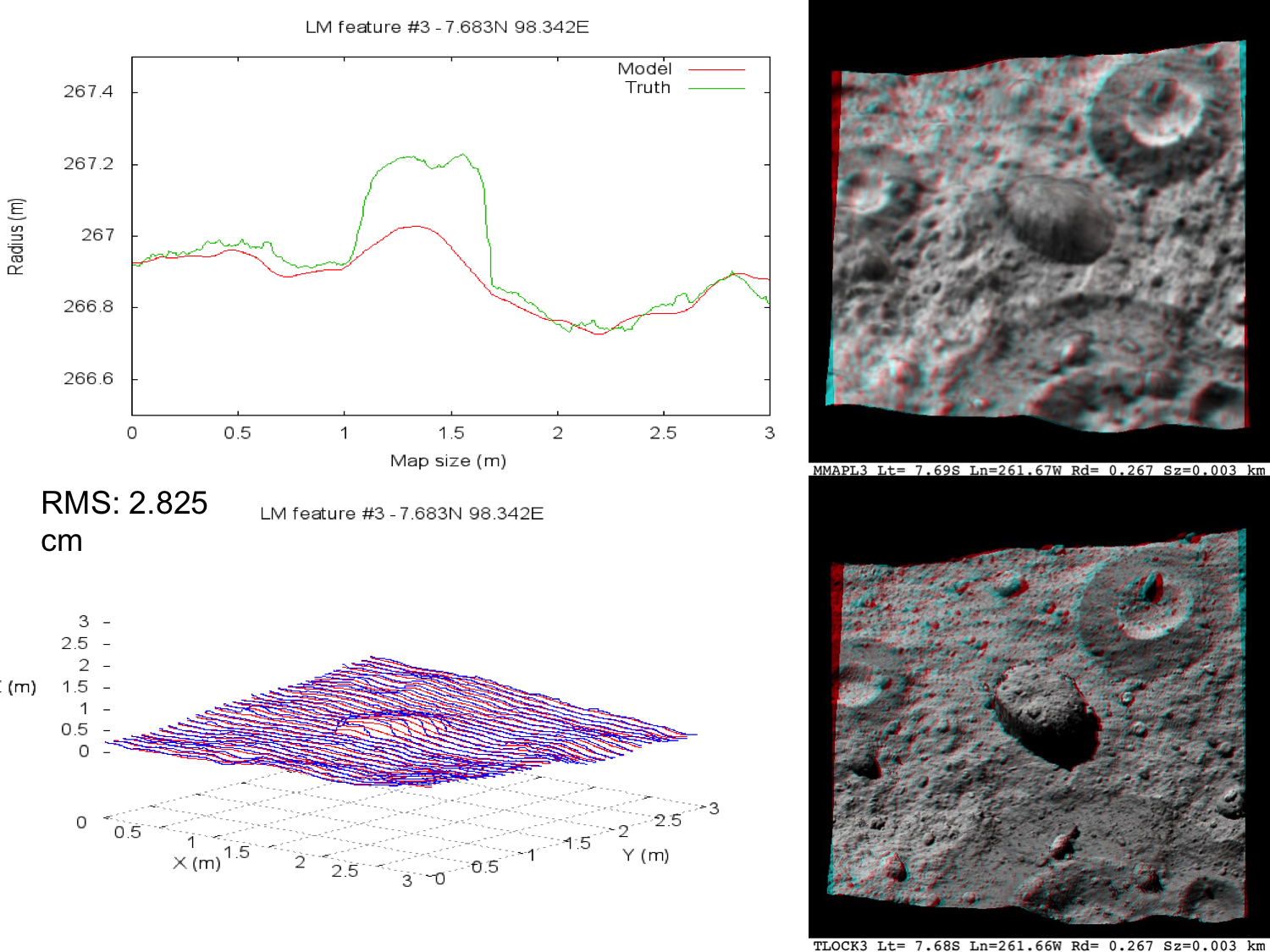
Feature 4
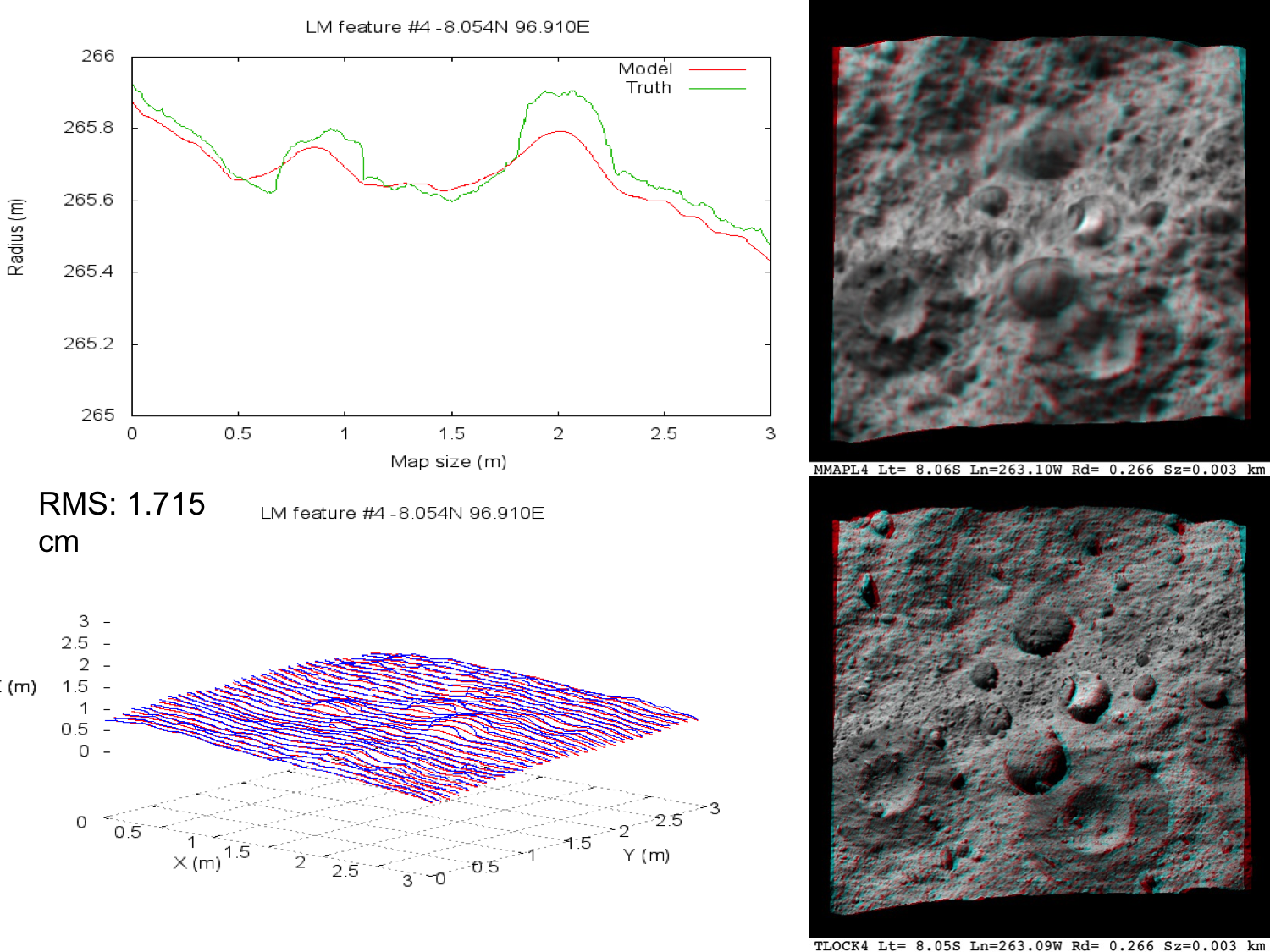
Feature 5
